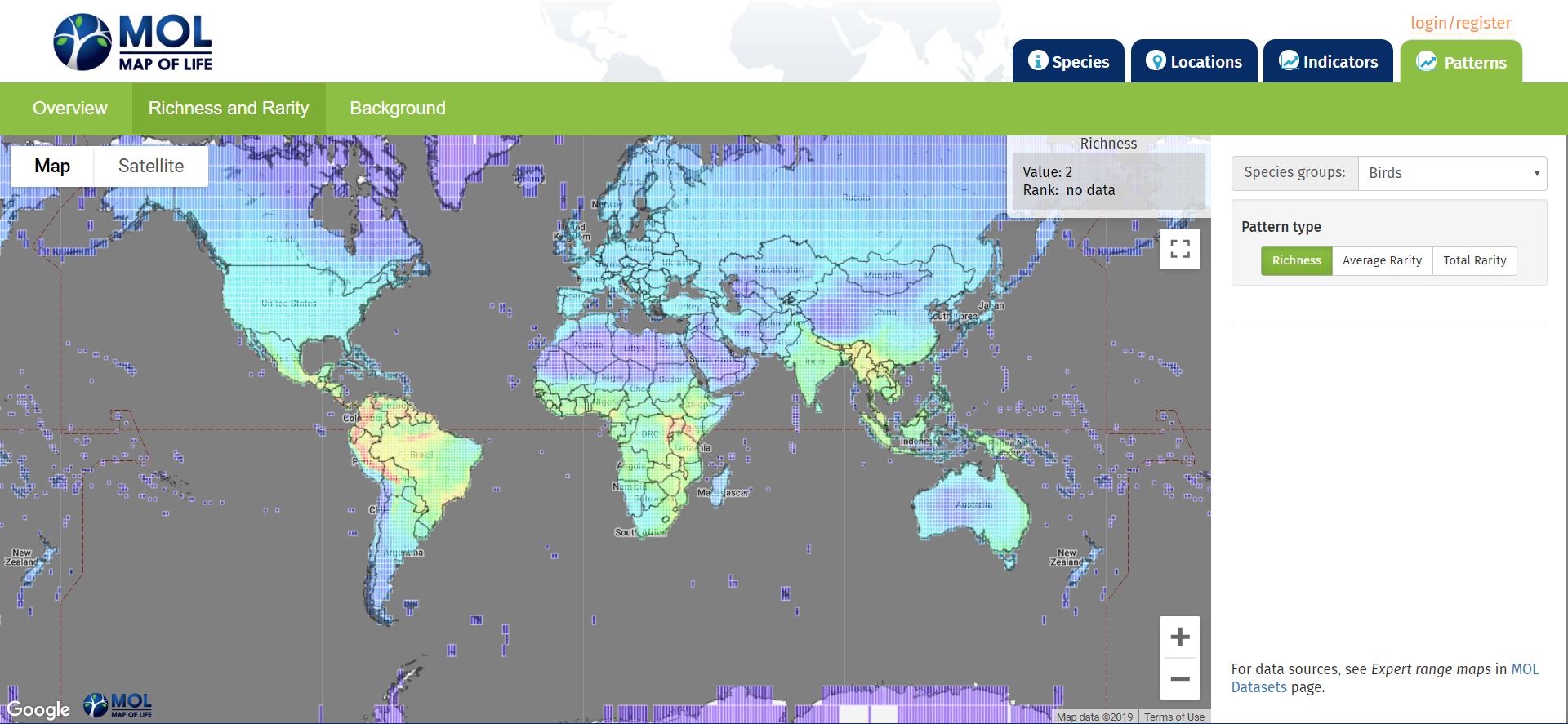This website, the Map of Life (MOL.org), has provided an interactive map that shows species richness and species rarity across the world, showing data on the biosphere. It using a spread of colors to symbolize the different values, with purple being the least rich or rare, and red being the most. The map has three different screens: one for richness, one for average rarity, and one for total rarity. Additionally, you can click between a map view and a satellite imagery view. The map allows you to zoom in and out to see variances between regions at a large and small scale. The map also allows you to pick groups of organisms, with categories such as vertebrates, invertebrates, and plants. Within these categories are subcategory to get more specific.
Here is an image of the map feature:
URL: https://mol.org/patterns/richnessrarity?taxa=birds&indicator=sr


One of the most interesting parts of this website is how it follows the theory of island biogeography. The most rich parts of the interactive map are the islands, especially places like Puerto Rico, Madagascar, Galapagos, and other small islands. All of the averages are also closest to the equator because many different types of animals can live there. It’s also really cool that you can pick different types of organisms. I found it interesting that places like around the coasts of Colombia had rare fish, but within Colombia there are also rare reptiles.
This website is very important as it allows one to visualize the species rarity for many important species across the globe, such as the increasing rarity of bumblebees in Europe. I was very interesting to swap between the layers to see and compare the popular and endangered species.
This website allows me consider how geographic location and spatial analysis can factor into the species richness and rarity. It reminded me of the island effect and how we discussed some reasons why an island nation like Australia has a much higher number of rare species in comparison to a large, heavily urbanized region such as the United States.